Introduction
Zionism is the movement that shaped modern Jewish identity and the state of Israel. Many people increasingly have many conflicting, and in some cases hateful ideas about what Zionism is and how Jewish people view it; this page aims to give a fair and informative overview of Zionism from the perspective of the Jewish people, its history, its perception, and the nature of Anti-Zionism.
What is Zionism?
Zionism is the belief that Jewish people have a right to self-determination in their ancestral homeland, which is now the state of Israel. So, in other words, Zionism means to believe in Israel’s right to exist as a state. The name “Zionism” comes from “Zion,” a biblical name for one of the hills in Jerusalem and the Land of Israel1. Zionism came from religious and non-religious desires for Jewish self-rule in their ancestral homeland.
It’s important to understand that about 97% of British Jews feel connected to matters in Israel, and 90% of Jewish people believe Israel has a right to exist2,3. This means that being against Zionism often feels like being against Jewish identity to many Jewish people.
Early Zionism
Zionism’s roots go back to the long-standing Jewish connection to the Land of Israel, which has been a key part of Jewish religious and cultural identity for thousands of years. However, the modern Zionist movement started in response to the oppression faced by Jewish communities in Europe during the 19th century, with its founder Theodore Herzl heavily influenced by the antisemitic prosecution of the “nominally Jewish” French military offer Alfred Dreyfus on false evidence4,5.

In Eastern Europe, especially in the Russian Empire, Jews faced harsh economic and social limits. They were forced to live in the “Pale of Settlement,” a specific area where Jews were allowed to live, and faced unfair laws that limited their chances and freedoms.6

The rise of nationalism across Europe in the 19th century also helped Zionism emerge. As various ethnic groups tried to establish their nation-states, some Jewish thinkers began to consider the idea of Jewish nationhood as a solution to the ongoing problems of anti-Semitism and being pushed to the sidelines.7

As more Jewish people moved to Palestine and bought land there (mainly from absentee Ottoman landlords), some Arab leaders organised attacks on Jewish communities. For example, in 1920, Haj Amin el-Husseini, the original Anti-Zionist, incited riots to attack Jews in Mandatory Palestine. They killed eight Jews and injured 200 more in just two attacks.8
Al-Husseini became Jerusalem’s Grand Mufti (a top religious leader) in 1921, though he lacked religious training. The British, who oversaw Mandatory Palestine then, chose him for the job as an important elite in the Arab community.9
Al-Husseini spread the libel that “al-Aqsa is in danger.”10 That is, he spread the false story that Jews were planning to destroy the al-Aqsa mosque and build a Jewish temple in its place. This caused a lot of anger and violence.
Al-Husseini was behind extreme antisemitic violence in Mandatory Palestine during the 1920s-30s. He led deadly riots against Jews, killing 43 in 1921, 133 in 1929,11 and a significant revolt against the British and Jews in the 1930s. During this revolt, over 200 civilians died and over 1300 injured13, including Arabs who disagreed with al-Husseini.14

In 1947, the UN, because of significant debate over the findings of the British Peel Commission, an inquiry into the violence against Jews in the Mandate, adopted a plan to split the land into two parts – one for Jews and one for Arabs, with Jerusalem under an international regime.15,16 The Jewish people were content with the partition. Still, the Arab countries and Palestinians rejected it out of hand.17 This led to a large existential war in 1948 when Israel became an independent country and when Palestinian narratives now refer to the Arab displacement in that conflict as “Nakbah”.
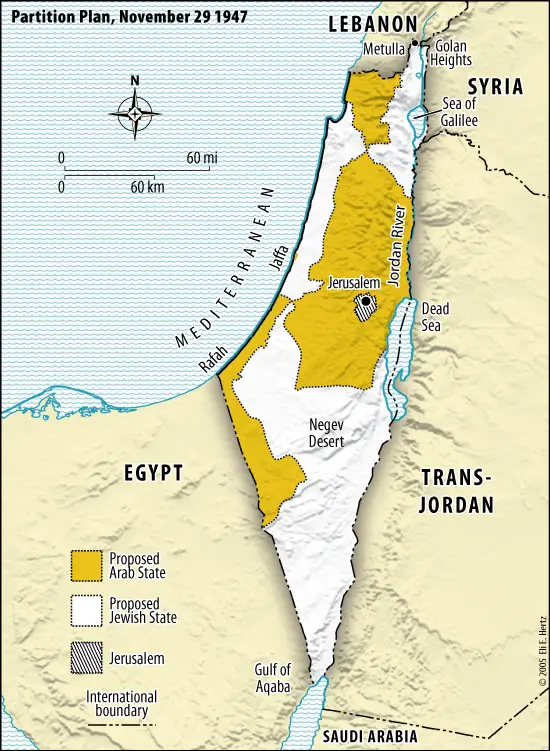
Map of the Partition

To this day, the claims made by the Grand Mufti have been perpetuated over the decades by every generation of the Palestinian leadership, all prescribing an intolerant and anti-Jewish nationalism that cannot tolerate a Jewish state.18
Post-Independence Israel
Throughout the 1950s and 1960s, Israel faced ongoing hostility. The Palestine Liberation Organization (PLO) was formed in 1964, well before Israel controlled the West Bank or Gaza, indicating that the conflict was not primarily about borders but about Israel’s very existence. The PLO’s initial charter explicitly called for the destruction of Israel, emphasising a broader Arab nationalist objective. There is still some disagreement at this time among Arab leaders over whether Palestine is to be treated as part of a larger Arab whole or a people in their own right19,20.

This period also saw the rise of fedayeen attacks against Israeli civilians. These guerrilla fighters launched many cross-border raids from the Egyptian-controlled All Palestine Protectorate in Gaza; between 1951 and 1955, hundreds of Israeli civilians were killed in these attacks, contributing to an atmosphere of tension and terror21.
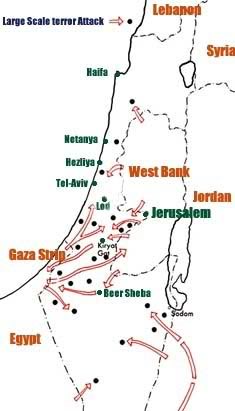
The Six-Day War in 1967 and the Yom Kippur War in 1973 are further symptoms of the Arab League’s Anti-Zionist opposition to Israel. The Six-Day War was a brief but intense conflict because of the posturing and mobilisation of the Egyptian President, Gamal Nasser, in the Sinai.22 Israel pre-emptively struck against Egypt, Syria, and Jordan, resulting in significant territorial gains23.

The Yom Kippur War, started by a surprise attack from Egypt and Syria on the Jewish holy day, initially succeeded in catching Israel off guard24; despite Israel securing victory, the constant conflict intended by the Arab leaders was clear. However, the result of that same conflict, Israel’s military success, paved the road to the Camp David Accords, with Israel returning the occupied Sinai to secure peace with Egypt in 197925,26.
The Intifadas
The First Intifada began in December 1987 and lasted until the Oslo Accords in 1993. A time of Palestinian violence against Israel and Israelis, the Intifada was marked by widespread demonstrations, strikes, and civil disobedience, as well as violent confrontations between Israeli soldiers and Palestinian youths using stones, Molotov cocktails, and eventually firearms supplied by different factions.27,28
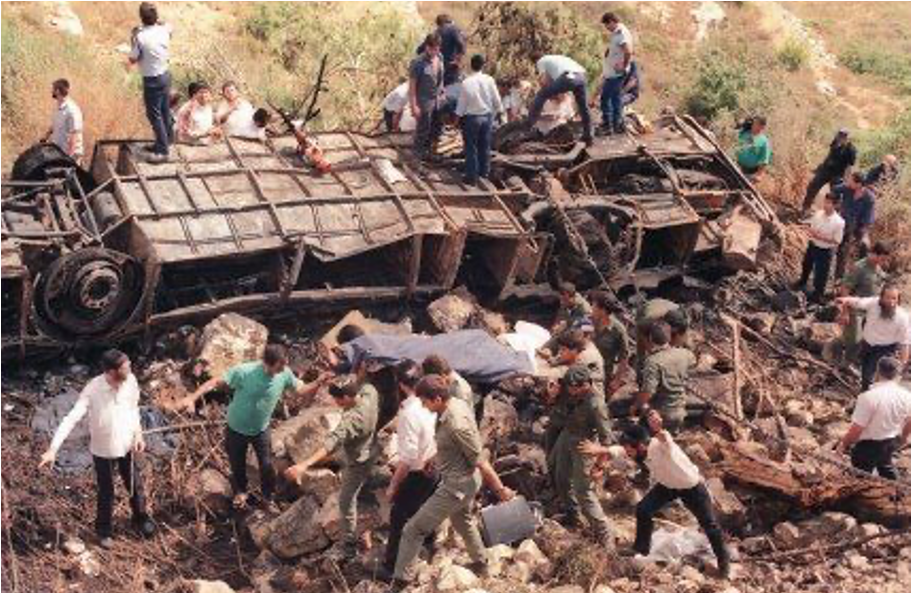
During the First Intifada, antisemitic attitudes were especially common. Palestinian propaganda regularly included antisemitic tropes and rhetoric, which were used to rally the population against Israelis. Educational materials, media broadcasts, and public speeches often showed Jews (and crucially not necessarily Israelis) in a negative light, continuing historical antisemitic stereotypes. The hostility contributed to frequent violence, including stabbings, shootings, and bombings targeting Israeli civilians.29
Arafat’s PLO eventually agreed in 1988 to UN Security Council resolution 242, pledging to allow Israelis to “live in peace within secure and recognised boundaries free from threats or acts of force”30. This formed the basis for negotiating peace with Israel. Arafat saw the value in a Palestinian Government in the West Bank at the price of giving up the Anti-Zionist ideal of Israel’s destruction, ending the first Intifada by signing the initial Oslo Accords in 199331,32.
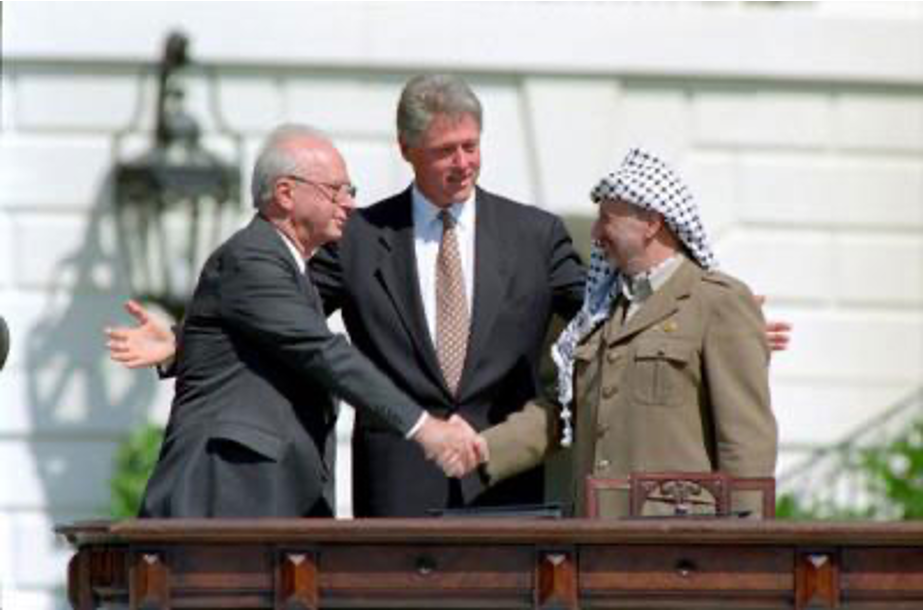
Unfortunately, the mantle of the PLO passed to Hamas, whose 1988 charter carried the PLO legacy of explicit antisemitism and avowed Israel’s destruction.33 Their opposition to Israel was openly religious, set in the demand for an Islamic state and the killing of the Jews34.
The Second Intifada, also known as the Al-Aqsa Intifada in the early 2000s, saw a return to violence, with Palestinian suicide bombings and other terror attacks targeting Israeli civilians and killing over 1,000. It also saw a significant increase in antisemitic incidents, both in Israel and worldwide, particularly in Western countries35.

During the Second Intifada, antisemitic sentiments and actions increased in the West. The violence in Israel encouraged antisemitic sentiment in Europe and North America. Jewish communities experienced a sharp rise in verbal abuse, physical assaults, vandalism, and other forms of antisemitism.36
Synagogues, Jewish schools, and cemeteries were frequently targeted, causing the need for unprecedented security measures at synagogues and other Jewish facilities, and there was a notable increase in public demonstrations featuring antisemitic slogans and imagery.37
In the current world, many on social media talk about ‘globalising the intifada,’ a slogan often heard at pro-Palestinian rallies. Many will claim this slogan is not antisemitic, another word for resistance, and that it could be meant peacefully. As you’ve seen, Intifada to Israelis in Israel is most prominently expressed as extreme antisemitic violence, and expanding that phase globally sounds to many jews like a call for violence against them. It is difficult to see in the context of the thousands of Jews dead and injured in the name of Intifada how it could be interpreted any differently38.

The 2005 Withdrawal from Gaza
In 2005, Israel made a major move towards peace by withdrawing from the Gaza Strip. This action, known as the Disengagement Plan, was led by Prime Minister Ariel Sharon. The plan involved removing all Israeli settlers and soldiers from Gaza. This decision was difficult for many Israelis, as it meant evacuating around 8,000 settlers who had lived there for years. Despite internal opposition, the Israeli government hoped this withdrawal would lead to a reduction in hostilities and create opportunities for peace with the Palestinians39.

The Gaza withdrawal showed Israel’s willingness to compromise for peace significantly. The hope was that the Palestinian Authority (PA) would take control of Gaza and create a peaceful, self-governing society, potentially leading to deeper peace negotiations40.
However, the situation in Gaza did not improve after the withdrawal. In 2006, Hamas, a militant group, won the Palestinian legislative elections. By 2007, Hamas had violently seized control of Gaza from the PA. Hamas is considered a terrorist organisation by Israel, the United States, and the European Union. Engaging in targeted assassination of political rivals, suspected collaborators and torture41. Hamas has since used Gaza as a base for launching rocket attacks against Israeli civilians42.
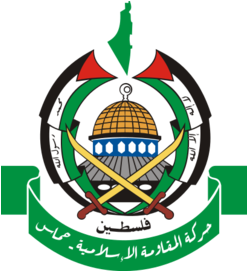
Under Hamas, Gaza has become a staging ground for terrorist activity. Thousands of rockets have been fired into Israeli territory43, leading to several Israeli military operations (2008 and 2014 being full-ground conflicts) to stop these attacks and dismantle Hamas’s military infrastructure. Hamas conducting their Anti-Zionist war from dense civilian areas has created substantial casualties and a dire humanitarian situation for the people of Gaza.44
Modern Anti-Zionism
There is a broad debate on Israel’s treatment of Palestinians residing in the West Bank and Gaza; many Jews will have strong views on settlement building, for example, and other policies of the Netanyahu government that have blocked peace.
However, the history of Arab violence against Jews continues to this day; Israel and its citizens do have legitimate security concerns—and the October 7, 2023, pogrom, which resulted in 1,200 civilian casualties and over 240 hostages taken, was the manifestation of all of them45.
The attack was methodically planned and executed and involved coordinated infiltrations from Gaza into southern Israel.46 Hamas terrorists used a combination of rocket barrages and ground assaults to get past Israeli defences, inflicting severe casualties and widespread terror. The violence of October 7 showed the deep hostility and violent intent of Hamas. First-hand accounts emphasised the extreme brutality of the attacks, including random mass killings and the targeting of civilian areas.
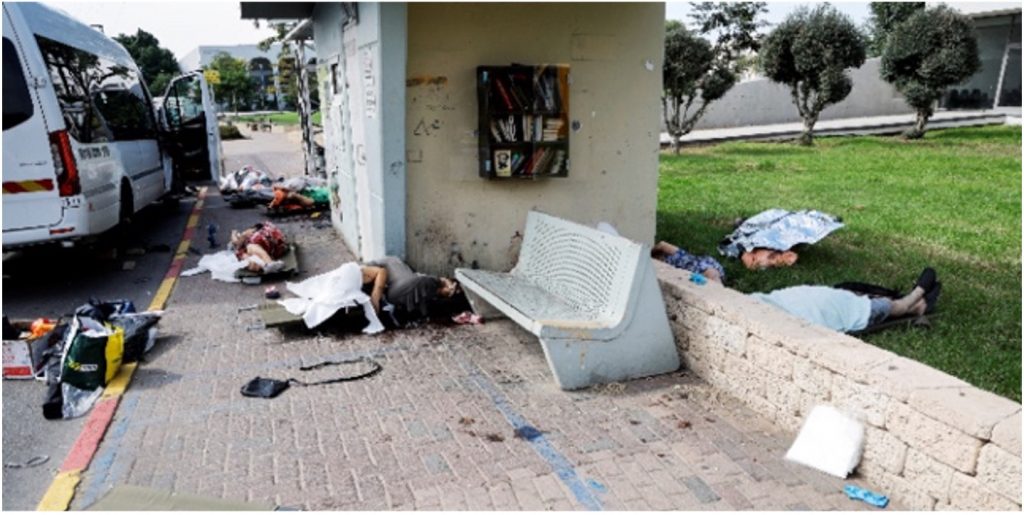
It was one of the deadliest attacks on Israeli soil since the country’s establishment in 1948.47
As we have seen throughout Israel’s history, the ideology and the violent intent behind this atrocity did not come out of nowhere. Palestinian leadership groups in both Gaza and the West Bank do not tolerate Jews48, and UNWRA-controlled schools in the Palestinian Territories teach young people to hate Jews and Israelis, to believe in the destruction of Jews as an aspiration49, which over generations has consistently prevented stability and peace.
Internally, Israel, like any country, has structural issues; access to public services and inequality are all issues faced by Arab Israelis; however, Israel is still a democracy governed and administered by law with constitutional rights and protections for its citizens, 21% of which are Arab. Israeli Arabs can and do hold high-level roles in government and civil society50 and can and do live in an open society with their Jewish neighbours, showing its possible to coexist in peace despite Hamas’s desire to see the world galvanise in support for their murderous struggle.
Zionism and Anti-Semitism
Many Jews in the diaspora, along with various observers, view Zionism as a legitimate expression of Jewish self-determination and national identity. They argue that Zionism is simply the right of the Jewish people to establish and maintain a state in their ancestral homeland, like any other nation’s right to self-rule51.
Some people argue that you can be against Zionism without being antisemitic (prejudiced against Jews)52. They would say that Zionism has had detrimental impacts on Palestinians, leading to significant displacement and conflict53. However, most Jewish people feel that anti-Zionism is usually just a cover for antisemitism. It’s like saying you’re okay with Jewish people existing but not with them having their own country, and, given their history of persecution, sanctuary in that country.54
Many anti-Zionist arguments are based on old stereotypes about Jewish people. Even if the people making these arguments don’t realise it, they’re often repeating ideas that have been used to discriminate against Jews for a long time55. For instance, claims about Zionists seeking economic exploitation of the Middle East mirror age-old tropes about Jewish financial control.56
Not to say that criticism of the Israeli government is at its core antisemitic; it’s not. Many Israelis and Jews across the globe criticise the policies of the Netanyahu government57. However, arguing over government policy is not the same as the Anti-Zionism declaration that Israel should not exist at all, denying the Jewish people’s right to self-determination and statehood.58
When people criticise Israel as “apartheid”59, they often ignore some important facts. Arab citizens can and do serve in the government and judiciary. Arab citizens make up about 21% of Israel’s population, and they have equal voting rights and representation in the Knesset, Israel’s parliament. Additionally, Arab citizens hold significant roles in various sectors, including medicine and academia, and enjoy legal protections under state law60.
Zionism, despite attempts to redefine it, is not a monolith; different Zionists have different ideas – religious, cultural, and political – about how Jews connect to their ancestral homeland. This variety shows there’s no single “Zionist” viewpoint, and indeed, not the viewpoint assumed by many pro-Palestinian activists.
Footnotes
- The Editors of Encyclopaedia Britannica. (2024, June 30). Zionism. Encyclopaedia Britannica. https://www.britannica.com/topic/Zionism
- Panjwani, A. (2018, September 26). Are the majority of British Jews Zionists? Full Fact. https://fullfact.org/news/are-majority-british-jews-zionists/
- Campaign Against Antisemitism. (2023, November 27). Almost 70% of British Jews are hiding their identity and almost half have considered leaving Britain since 7th October, new CAA polling shows. Campaign Against Antisemitism. https://antisemitism.org/almost-70-of-british-jews-are-hiding-their-identity-and-almost-half-have-considered-leaving-britain-since-7th-october-new-caa-polling-shows/?mc_cid=469d00f637
- Library of Congress. (n.d.). Chronicling America: The Dreyfus Affair. Retrieved from https://guides.loc.gov/chronicling-america-dreyfus-affair
- Pluralism Project. (2023). Zionism and Israel. The Pluralism Project. https://pluralism.org/zionism-and-israel
- American Israeli Cooperative Enterprise. (n.d.). The Pale of Settlement. Jewish Virtual Library. from https://www.jewishvirtuallibrary.org/the-pale-of-settlement
- Britannica, “Zionism.”
- Jewish Virtual Library. (n.d.). Arab Riots of the 1920’s. from https://www.jewishvirtuallibrary.org/arab-riots-of-the-1920-s
- Encyclopaedia Britannica. (n.d.). Amin al-Husayni. In Encyclopaedia Britannica. Retrieved July 7, 2024, from https://www.britannica.com/biography/Amin-al-Husayni
- Black, E. (2014, October). How the Mufti of Jerusalem created the permanent problem of Palestinian violence. The Tower, from https://www.thetower.org/article/how-the-mufti-of-jerusalem-created-the-permanent-problem-of-palestinian-violence/
- Jewish Virtual Library, Arab Riots.
- CAMERA. (n.d.). Anti-Jewish violence in pre-state Palestine: 1929 massacres., from https://www.camera.org/article/anti-jewish-violence-in-pre-state-palestine-1929-massacres/
- United States Holocaust Memorial Museum. (n.d.). Hajj Amin al-Husayni: Arab nationalist and Muslim leader. Holocaust Encyclopedia. from https://encyclopedia.ushmm.org/content/en/article/hajj-amin-al-husayni-arab-nationalist-and-muslim-leader
- Kopel, H. (2023, 24 September). De-Nazify the Palestinian leadership. JNS. from https://www.jns.org/israel-palestinianconflict/palestinians/23/9/24/321578/
- United Nations. (1947). Resolution 181 (II). Future government of Palestine. from https://undocs.org/A/RES/181(II)
- Jewish Virtual Library. (n.d.). Map of the U.N. partition plan., from https://www.jewishvirtuallibrary.org/map-of-the-u-n-partition-plan
- Arab League Declaration on the Invasion of Palestine, 15 May, 1948. https://web.stanford.edu/group/tomzgroup/pmwiki/uploads/1793-1948-05-15-JVL-IEM.pdf
- Kopel, H. (2023, 24 September). De-Nazify the Palestinian leadership. JNS. Retrieved July 7, 2024, from https://www.jns.org/israel-palestinianconflict/palestinians/23/9/24/321578/
- Encyclopaedia Britannica. (2024). Palestine Liberation Organization. https://www.britannica.com/topic/Palestine-Liberation-Organization
- Jewish Virtual Library. (2024). The Original Palestine National Charter (1964). https://www.jewishvirtuallibrary.org/the-original-palestine-national-charter-1964
- U.S. Department of State. (n.d.). Foreign Relations of the United States, 1955–1957, Volume XV, Arab-Israeli dispute, 1955. Retrieved July 7, 2024, from https://history.state.gov/historicaldocuments/frus1955-57v15/d255#fn:1.7.4.4.12.192.12.4
- U.S. Department of State. (n.d.). The 1967 Arab Israeli War. from https://history.state.gov/milestones/1961-1968/arab-israeli-war-1967
- Council on Foreign Relations. (2024). How Six Days in 1967 Shaped the Modern Middle East. https://www.cfr.org/expert-roundup/how-six-days-1967-shaped-modern-middle-east
- Britannica, T. Editors of Encyclopaedia (2024, May 31). Yom Kippur War. Encyclopaedia Britannica. https://www.britannica.com/event/Yom-Kippur-War
- Yale Law School. (n.d.). The Camp David Accords. from https://avalon.law.yale.edu/20th_century/campdav.asp
- U.S. Department of State. (n.d.). The Camp David Accords, 1978, from https://history.state.gov/milestones/1977-1980/camp-david
- Encyclopaedia Britannica. (n.d.). Intifada. In Encyclopaedia Britannica. from https://www.britannica.com/topic/intifada
- ADL. (2022). The Intifada: 1987-1990. https://www.adl.org/resources/backgrounder/intifada-1987-1990
- Jewish Virtual Library. (n.d.). Palestinian anti-Semitism: History and overview. from https://www.jewishvirtuallibrary.org/palestinian-anti-semitism-history-and-overview
- United Nations Security Council. (1967). Resolution 242 (1967) of 22 November 1967, from http://unscr.com/en/resolutions/doc/242
- Knesset. (n.d.). The Oslo Accords: Declaration of Principles, from https://web.archive.org/web/20021115183950/http://knesset.gov.il/process/docs/oslo_eng.htm
- U.S. Department of State. (n.d.). The Oslo Accords, 1993, from https://history.state.gov/milestones/1993-2000/oslo
- Hamas. The Avalon Project (1988). The Covenant of the Islamic Resistance Movement (Hamas) from https://avalon.law.yale.edu/20th_century/hamas.asp
- Encyclopaedia Britannica. (n.d.). Intifada
- ADL. (2016). The Second Intifada 2000. https://notoleranceforantisemitism.adl.org/resources/backgrounder/second-intifada-2000
- Lerman, A. (2003). Anti-Semitism revived: The impact of the intifada on Muslim immigrant groups in Western democracies. Jerusalem Center for Public Affairs. Retrieved July 7, 2024, from https://jcpa.org/article/anti-semitism-revived-the-impact-of-the-intifada-on-muslim-immigrant-groups-in-western-democracies/
- EUMC. (2004). Manifestations of Antisemitism in the EU 2002-2003. European Monitoring Centre on Racism and Xenophobia. Retrieved from https://fra.europa.eu/sites/default/files/fra_uploads/184-as-main-report.pdf
- American Jewish Committee. (n.d.). Translate Hate. Globalize the Intifada. from https://www.ajc.org/translatehate/Globalize-the-Intifada
- Encyclopaedia Britannica. (n. d.). Israel’s disengagement from Gaza. Retrieved from https://www.britannica.com/event/Israels-disengagement-from-Gaza
- Levine, N. My Jewish Learning. (2024). Understanding the Gaza Disengagement. Retrieved from https://www.myjewishlearning.com/article/gaza-disengagement/
- Human Rights Watch. (April 2009). Under cover of war: Hamas political violence in Gaza. Retrieved July 7, 2024, from https://www.hrw.org/reports/iopt0409web.pdf
- Council on Foreign Relations. (2024). Hamas. Retrieved from https://www.cfr.org/backgrounder/what-hamas
- Jewish Virtual Library. (n.d.). Palestinian rocket and mortar attacks against Israel, from https://www.jewishvirtuallibrary.org/palestinian-rocket-and-mortar-attacks-against-israel
- Harvard Humanitarian Initiative. (2023). Crisis Situation Update: Humanitarian Conditions in Gaza. Retrieved from https://hhi.harvard.edu/news/crisis-situation-update-humanitarian-conditions-gaza
- Encyclopaedia Britannica. (n.d.). Israel-Hamas War. In Encyclopaedia Britannica, from https://www.britannica.com/event/Israel-Hamas-War#ref364609
- Times of Israel. (2023). Israel revises death toll from Oct. 7 Hamas assault, dropping it from 1,400 to 1,200. Retrieved from https://www.timesofisrael.com/israel-revises-death-toll-from-oct-7-hamas-assault-dropping-it-from-1400-to-1200/
- American Jewish Committee (AJC). (2023). Israel-Hamas War: What You Need To Know. Retrieved from https://www.ajc.org/news/israel-is-under-siege-for-american-jews-this-is-not-some-distant-issue-its-personal
- American Jewish Committee. (2023, 7 September). American Jewish Committee condemns unhinged antisemitic rant by PA President Abbas. AJC, from https://www.ajc.org/news/american-jewish-committee-condemns-unhinged-antisemitic-rant-by-pa-president-abbas
- IMPACT-se. (2022). Review of 2022 UNRWA-produced study materials in the Palestinian territories, from https://www.impact-se.org/wp-content/uploads/Review-of-2022-UNRWA-Produced-School-Materials.pdf
- Council on Foreign Relations. (2023, 11 May). What to know about the Arab citizens of Israel, from https://www.cfr.org/backgrounder/what-know-about-arab-citizens-israel
- Munk Debates. (2024). Munk debate on anti-Zionism, from https://munkdebates.com/debates/munk-debate-on-anti-zionism
- Brookings. (2024, January 27). 75 years after Auschwitz, anti-Semitism is on the rise. Retrieved July 7, 2024, from https://www.brookings.edu/articles/75-years-after-auschwitz-anti-semitism-is-on-the-rise/
- Freie Universität Berlin. (2024, July 5). Is anti-Zionism antisemitic? About the weaponization of antisemitism in current debates. Retrieved July 7, 2024, from https://www.fu-berlin.de/en/campusleben/kalender/2024/antisemitismus-rassismus-diskriminierung/20240705-is-anti-zionism-antisemitic.html
- DW. (2024, May 5). Antisemitism rising dramatically across the world — report, from https://www.dw.com/en/antisemitism-rising-dramatically-across-the-world-report-finds/a-69000456
- Anti-Defamation League. (2024). Antisemitic attitudes in America 2024, from https://www.adl.org/resources/report/antisemitic-attitudes-america-2024?utm_adcontent=webpage
- Journalist’s Resource. (2024). Antisemitism on the rise in America: An explainer and research roundup. from https://journalistsresource.org/home/antisemitism-on-the-rise-an-explainer-and-research-roundup/
- Anti-Defamation League. (2024). What is antisemitism, anti-Zionism, anti-Israel bias? No Tolerance for Antisemitism. from https://notoleranceforantisemitism.adl.org/resources/tools-and-strategies/what-antisemitism-anti-zionism-anti-israel-bias
- Waxman, D. (2021). Arguing about antisemitism: Why we disagree about antisemitism, and what we can do about it. Ethnic and Racial Studies. Retrieved July 7, 2024, from https://www.dovwaxman.org/wp-content/uploads/2021/08/Arguing-about-antisemitism-why-we-disagree-about-antisemitism-and-what-we-can-do-about-it.pdf
- Silverstein, A. (2024). Does Israel practice apartheid against its Arab and other non-Jewish citizens? The Times of Israel Blogs. https://blogs.timesofisrael.com/does-israel-practice-apartheid-against-its-arab-and-other-non-jewish-citizens/
- Council on Foreign Relations. (2023). What to know about the Arab citizens of Israel
- Sacks, J. (2014, August 16). The hate that starts with the Jews never ends there, from https://rabbisacks.org/archive/hate-starts-jews-never-ends-there/

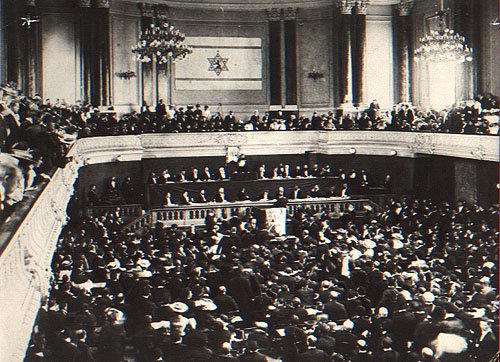
Leave a Reply